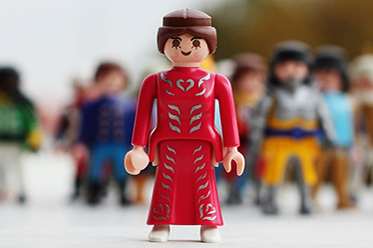 The latest change in the federal government’s arts funding approach, announced by new arts minister Mitch Fifield on November 18, raises more questions than it answers. Yes – as explored in an expert response panel published on The Conversation – the maligned National Program for Excellence in the Arts (NPEA) is now Catalyst – Australian Arts and Cultural Fund.
The latest change in the federal government’s arts funding approach, announced by new arts minister Mitch Fifield on November 18, raises more questions than it answers. Yes – as explored in an expert response panel published on The Conversation – the maligned National Program for Excellence in the Arts (NPEA) is now Catalyst – Australian Arts and Cultural Fund.
But what on Earth are we to make of it? The intent of Catalyst is to reward ‘innovation’ – as compared with ‘excellence’ in the previous iteration. While ‘innovation’ is a more populist strategy than ‘excellence’, arguably everything that happens in the arts is ‘innovative’. Both funding programs are dependent on money reallocated from the Australia Council.
The Australia Council for the Arts – as the independent ‘arms length’ funding body for artists in Australia – is central to the story. Previous arts minister George Brandis had intended to fund the NPEA with A$104.7 million over four years, redirected from the Australia Council, and administered according to contentious guidelines which – among other concerns – saw grants to individual artists disappear.
Catalyst, the replacement body, will distribute A$12 million annually, with A$8 million a year being reallocated to the Australia Council.
With a change in prime minister and the appointment of a new arts minister there has been an acknowledgement perhaps that the arts matter. Maybe the government was a little embarrassed by the furor it created within the arts sector by the previous changes. But, whether the needs and concerns of the arts sector have been fully understood is still not evident.
The arts sector (while the Australia Council itself remained publicly silent) fought hard to communicate its concerns about the Brandis changes to anyone who would listen. More than 2,200 submissions were made to a senate inquiry into the funding changes – showing not just the level of discontent but the incredibly wide range of individuals and bodies that comprise the sector.
The submissions underlined the fact that the Australian arts sector is not just the ‘high arts’: it is also about small and medium size organisations and individual artists who work in many different contexts doing every kind of arts practice.
People engaged in such high numbers with the inquiry process because, in many cases, their very survival and continuity as artists and arts organisations was at stake. The government has responded by returning some of the money to the Australia Council (A$32 million over four years, out of a total of A$104.7 million over four years) it previously took, seeing its response no doubt as a worthy compromise.
But what about the rest of the money that was taken and the concerns expressed by those working in the small to medium sector about their capacity to actually survive? Inventing another new category of funding does not address those concerns – it merely increases their workload while they try to fit their activities into a new box, so that they might get some of the money on offer.
There is an uneasy compact between government and the arts sector in Australia. While it is recognised that a healthy and sophisticated nation needs the arts, governments of all persuasions are uncomfortable about giving enough money to the sector to ensure that the arts thrive and prosper.
Other sectors receive huge government investments without hesitation, and the argument for industry subsidy usually relates to supporting job growth. Why this argument cannot be used in relation to the arts sector is a mystery.
Perhaps being an artist is not seen as a real job. In addition, artists are not seen by governments as “appropriately” grateful for whatever is thrown in their direction. Instead any allocation of money to the arts is always qualified by feelings of obligation and charity.
Perhaps that’s because the arts can be a source of powerful social commentary and are thereby seen as criticising the ‘hand that feeds them’. Furthermore, in many quarters the arts receiving any government support is still a ‘contested’ space.
In fact, the truth is that artists themselves are the major sponsors of the arts, even though their incomes are predominantly extremely low, as evidenced time and again by economic surveys of artists. Keeping our artists ‘poor’ may be seen as an effective method of keeping them under control. But isn’t it time that Australia matured as a nation and starting treating the arts sector and artists with respect and validation?
It would be a great step forward for Australia if the arts were no longer regarded as the ideological plaything of a new minister or a new government.
Catalyst or NPEA, we need to grow up: artists aren’t playthings for the government
Jo Caust, Associate Professor, Cultural Policy and Arts Leadership, University of Melbourne
This article was originally published on The Conversation. Read the original article.
See also: Out with the NPEA, in with Catalyst: expert response
Image: courtesy of The Conversation
